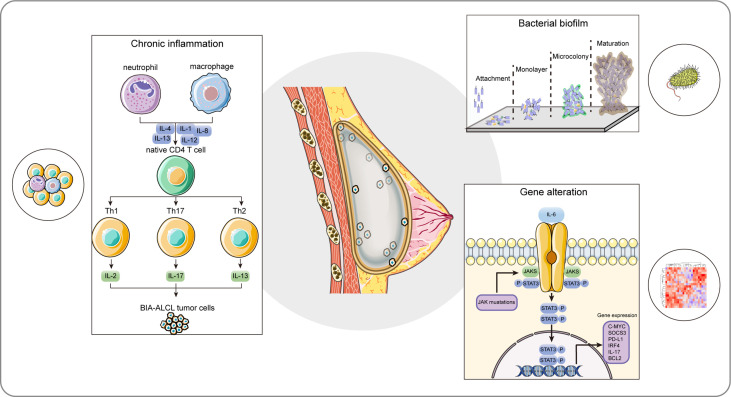Figure 1.
The proposed hypothesis of the cellular and molecular etiological factors for BIA-ALCL. BIA-ALCL formation involves multiple interplays of internal and external factors collectively, including genetic predisposition, bacterial biofilm, chronic inflammation, and textured breast implant. The composition of the textured implant could be identified as a foreign antigen, and the textured surface of the implant provides a proper environment for bacterial biofilm colonization, formation, and development. Cytokines produced by bacterial infection and autoimmune activate CD4+ T cells, thus leading to a persistent chronic inflammatory state and resulting in the clone reproduction of activated CD4+ T cells. The aberrantly oncogenic JAK/STAT3 pathway mutations and IL-6-induced overexpressed STAT3 signal pathway promote phenotypic differentiation of Th1/Th17 and Th2 lymphocytes. These factors together ultimately result in the uncontrolled T cell clone expansion and the formation of BIA-ALCL. BIA-ALCL, breast implant-associated anaplastic large cell lymphoma; IL-1, interleukin-1; IL-2, interleukin-2; IL-4, interleukin-4; IL-8, interleukin-8; IL-12, interleukin-12; IL-13, interleukin-13; IL-17, interleukin-17; JAK, Janus kinase; STAT3, transcription factor 3.

